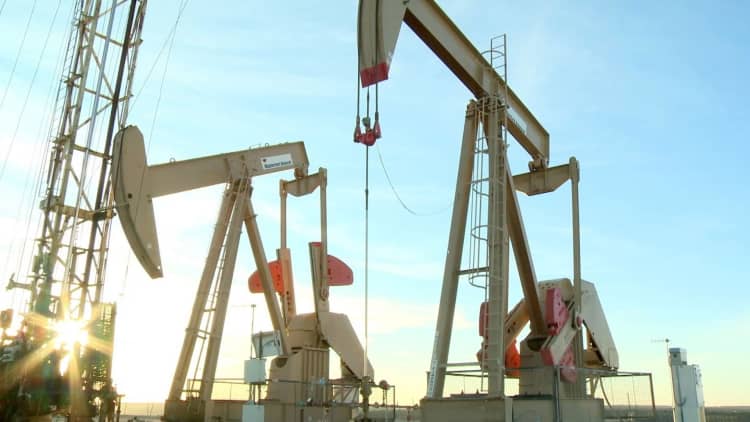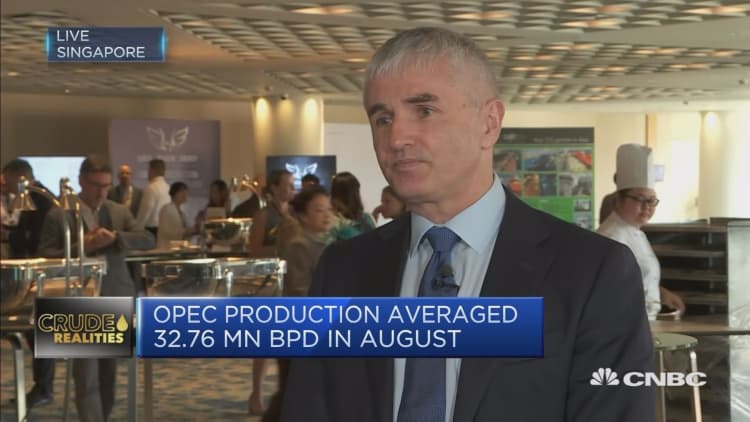
Oil prices below $50 are simply not going to cut it in the U.S. shale oil patch, Moody's analysts say in a new research note.
Exploration and production companies have managed to drive down their costs since oil prices crashed in late 2014. But Moody's believes it will be difficult for drillers to cut much deeper, and any reductions will be offset by a rebound in the prices that oilfield services companies charge.
For that reason, drillers won't be able to make significant returns on the capital they plow into new production unless benchmark U.S. West Texas Intermediate crude oil and natural gas prices cooperate, Moody's said.
"Despite substantially improved cost structures, E&P companies will be able to generate meaningful capital efficiency, only if the WTI oil price is above $50 per bbl and the Henry Hub natural gas price is at least $3.00 per" million British thermal units, Moody's senior analyst Sreedhar Kona concludes in the report.
U.S. WTI prices, year to date, source: Factset
Commodity prices have fallen close to Moody's threshold so far this year. WTI has averaged $49.34 a barrel, while natural gas prices were at $3.02 in the first eight months of 2017, the ratings agency said.
The analysis comes as U.S. crude recently rose above $50 a barrel for the first time in four months, hitting a five-month high of $52.86 on Thursday. The U.S. Energy Department projects oil prices will average $48.83 next year and $49.58 in 2018.
The report also aligns with a renewed focus on financial discipline over debt-fueled growth among U.S. producers, widely expressed in second quarter earnings reports. The industry is notorious for its long, unfruitful efforts to generate positive cash flow.
U.S. shale drillers rely on expensive advanced drilling methods like hydraulic fracturing. They drill horizontally into shale and then inject water, minerals and chemicals at high pressure to fracture the rock formation, allowing oil and gas to flow to the wellhead.
A lot of ink has been spilled lately over falling break-even costs, the price at which drillers aren't losing money on producing a barrel of oil. In some parts of the United States, break-evens have fallen below $40 a barrel as producers drill and complete wells more efficiently and wring discounts from oilfield services companies.

But Moody's makes an important point: Drillers can't just break even on their production. Eventually, they need to "recover their costs, earn a meaningful return on their investments, reinvest in further development of their acreage, repay debt and reward shareholders for the risk and cyclicality associated with the industry."
Drillers can't do that at break-even costs below $45 a barrel and $3 per mmBtu for natural gas, Moody's says.
Moody's based its finding on a study of 37 U.S. drillers. It studied their operating cash margins and their costs of finding and developing fossil fuels to determine capital efficiency.
Among the drillers with the best capital efficiency metrics in 2016 were Antero Resources and Range Resources. Those near the bottom of the pack were Whiting Petroleum, ConocoPhillips and Southwestern Energy.


